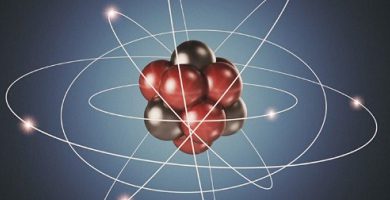Alcohols: Definition, Types And Formula in Chemistry
We explain what are the alcohols, their classification, nomenclature and properties. In addition, examples and importance in the industry.
-
What are the alcohols?
Alcohols are certain organic chemical compounds, which have in their structure one or more hydroxyl chemical groups (-OH) covalently bonded to a saturated carbon atom (that is, with simple bonds only to adjacent atoms), thus forming a carbinol group (-C-OH).
Alcohols are very common organic compounds in nature , which play important roles in living organisms, especially in organic synthesis.
Its name comes from the Arabic al-kul , which literally translates “spirit” or “distilled liquid”, since the old Muslim alchemists perfected its distillation methods in the ninth century. Later studies allowed to know its chemical nature, especially the contributions of Lavoisier regarding the fermentation of brewer’s yeast.
Alcohol intake has toxic effects on the human organism, in some cases inducing intoxication and acting as a behavior inhibitor, but also as a depressant of the Central Nervous System (this is the case of ethanol).
In other cases, they have a harmful and possibly lethal effect, depending on the dose consumed. However, they also have antibacterial and antiseptic properties , which allow surface uses.
-
Types of alcohols
In principle, alcohols can be classified according to the number of carbonyl radicals they present. Thus, a distinction is made between alcohols (a radical) and polyalcohols or polyols, which have two or more.
However, the main distinction between alcohols depends on their atomic structure around the carbon atom of carbinol, as follows:
- Primary alcohols . The hydroxyl group (-OH) is located in a carbon linked in turn to another single carbon atom.
- Secondary alcohols . The hydroxyl group (-OH) is located in a carbon linked in turn to two other different carbon atoms.
- Tertiary alcohols . The hydroxyl group (-OH) is located in a carbon linked in turn to three other different carbon atoms.
-
Nomenclature of alcohols
Like other organic compounds, alcohols have different ways of naming, which we will explain below:
Traditional method (not systemic) . Attention is paid, first of all, to the carbon chain to which hydroxyl (usually an alkane) adheres, to rescue the term with which it is named, put the word “alcohol” before it and then add the suffix -yl in place of -ano. For example:
- If it is a methane chain, it will be called methyl alcohol .
- If it is an ethane chain, it will be called ethyl alcohol .
- If it is a propane chain, it will be called propyl alcohol .
IUPAC method . Like the previous method, attention will be given to the precursor hydrocarbon, to rescue its name and simply add an ele ( L ) at the end of the suffix -ano. For example:
- If it is a methane chain, it will be called methanol .
- If it is an ethane chain, it will be called ethanol .
- If it is a propane chain, it will be called propanol .
Eventually, it will be necessary to indicate in some way the location of the hydroxyl group in the chain, for which a number will be used at the beginning of the name: 2-butanol , for example.
-
Physical properties of alcohols
Alcohols are generally liquid and colorless , although they have a characteristic smell. They are soluble in water through hydrogen bonds, although only in their simplest versions, since they start to have oily consistency and be insoluble in water.
Similarly, the density of the alcohols is higher according to the increase in the number of carbon atoms in their chain and the ramifications they introduce. The same goes for their melting and boiling points : they increase according to the largest number of hydroxyl groups in their formula , since their hydrogen bonds are difficult to break.
-
Chemical properties of alcohols
The alcohols have a dipolar character , similar to that of water , due to their hydroxyl molecule , which makes them polar substances (endowed with a positive and a negative pole).
Because of this, they can behave as acids or as bases depending on what reagent they are with. For example, if it is a strong base, the hydroxyl group is deprotonated and oxygen retains its negative electromagnetic charge, acting as an acid.
On the other hand, if faced with a very strong acid, the electronic oxygen pairs cause the hydroxyl to protonize, having a positive charge and behaving as a weak base.
On the other hand, alcohols can:
- halogenate on reacting with a hydrochloric acid to form aquyl halides and water;
- oxidize in the presence of catalysts to produce carboxylic acids, ketones or aldehydes, depending on the type of alcohol used;
- dehydrogenating in the presence of heat and certain catalysts (primary and secondary alcohols only), to lose hydrogen and become aldehydes or ketones;
- dehydrate in the presence of a mineral acid, to extract the hydroxyl group and thus obtain an alkene by elimination processes.
-
Importance of alcohols

Alcohols are substances of much chemical value. As raw material , they are used to obtain other organic compounds , in laboratories. Also as a component of industrial products for everyday use, such as disinfectants, cleaners, solvents, perfume base.
They are also used in the manufacture of fuels, especially in the biofuel industry , an alternative to fossil fuels . It is common to see them in hospitals, first aid kits or the like. or First Aid Certification.
On the other hand, certain alcohols are for human consumption (especially ethanol), part of numerous spirits in different degrees of refining and intensity.
-
Examples of alcohols
Some examples of common use are ethanol or ethyl alcohol (C 2 H 5 OH), 1-propanol (C 3 H 7 OH), methanol (CH 3 OH) or isobutanol (C 4 H 9 OH).





